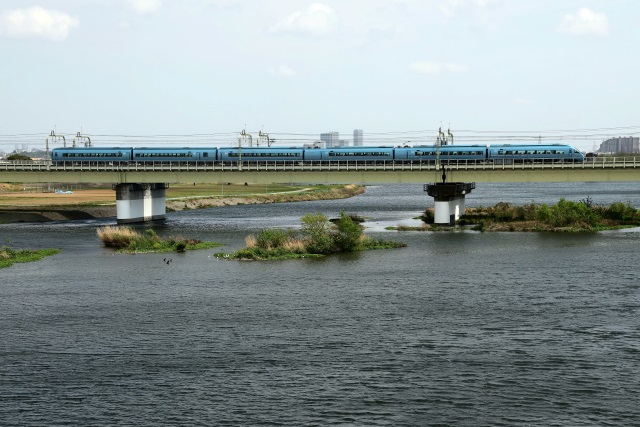It's September already. Time really flies. Before introducing the topics of autumn, I'm going to keep on subjects of this summer a bit more.
Sunflower festivals are popular midsummer events in Japan. Many flower lovers flock to the festival venues. I’m also one of them. This year, I went to check out the sunflower festival of Zama City in Kanagawa Prefecture with my family. In the festival ground, nearly 550,000 flowers were blooming along Sagami River. It was very vivid and gorgeous. Whenever I visited sunflower festivals, I feel strange mood while I walk in the field. To be exact, I feel many eyes watching me. It’s because all the flowers face me. A round shaped sunflower looks like someone's face. Probably, I’m spaced out.
To visit this beautiful sunflower field, we took the Odakyu line, and got off at Sobudaimae station. It took about 50 minutes from Shinjuku, a subcenter of Tokyo. Taking this opportunity, I’m going to show you the EMU 8000 series, the active oldest commuter train on the Odakyu line. The 8000 series is a fully painted steel body train. It was commissioned in 1982 to replace old commuter trains such as the 2600 series. Its clean and beautiful body hasn't faded despite 42 years having passed by. As I recently posted, 40 units of the 8000 series are being transferred to Seibu Railway, another major private railway in Tokyo starting this year. The history of this experienced Odakyu train will keep going on.







































